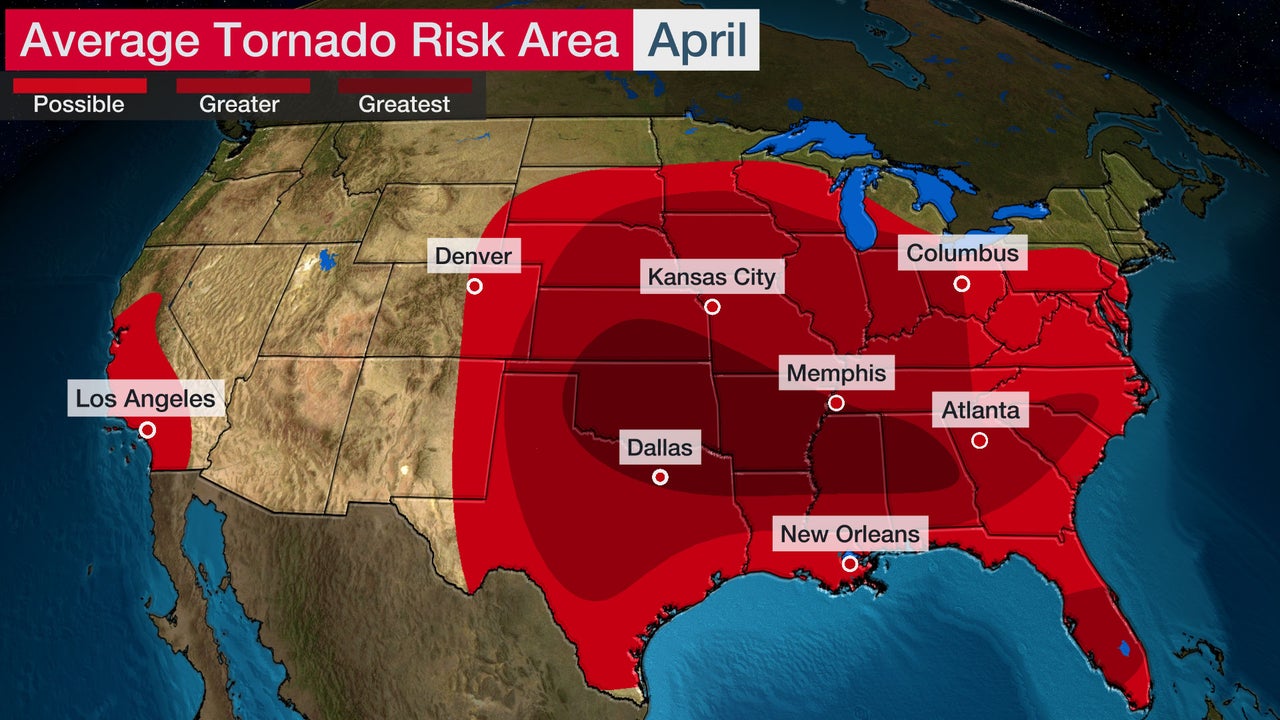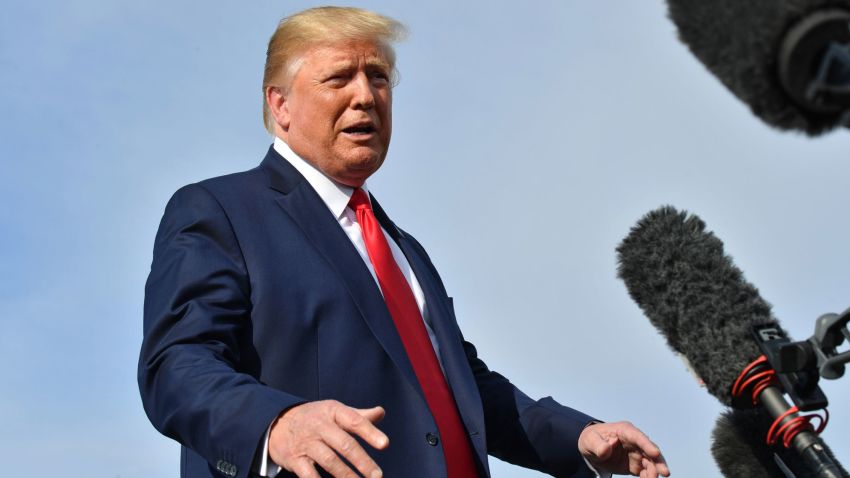Tornado Season And Trump's Cuts: A Dangerous Combination

Table of Contents
Weakened National Weather Service (NWS): The Impact of Budget Cuts
The National Weather Service (NWS) plays a crucial role in protecting lives and property during tornado season. Its network of radar stations, weather satellites, and trained meteorologists provides vital tornado prediction and warning services. However, the Trump administration's budget cuts have significantly weakened the NWS's capabilities. These cuts have had a cascading effect, impacting staffing levels, technological advancements, and critical research programs.
- Reduced number of weather spotters: Fewer trained spotters on the ground mean fewer eyes observing developing storms and reporting crucial real-time information.
- Limited upgrades to radar and forecasting technology: Outdated technology hinders the accuracy and timeliness of tornado warnings, leaving communities with less time to prepare and seek shelter. Investing in advanced Doppler radar systems and improved forecasting models is crucial for enhancing accuracy.
- Cuts to research programs improving tornado prediction models: Reduced funding for research directly impacts the development of more accurate and sophisticated tornado prediction models, limiting our ability to anticipate and prepare for these devastating events.
- Impact on timely and accurate tornado warnings: The cumulative effect of these cuts is a decline in the timeliness and accuracy of tornado warnings, leading to increased risk for those in the path of these powerful storms. This directly impacts community safety and efficient emergency response. Improved NWS funding is critical to ensuring timely and accurate severe weather warnings.
Underfunded Emergency Response and Recovery: Leaving Communities Vulnerable
Swift and efficient emergency response and recovery efforts are paramount after a tornado strikes. However, budget cuts have significantly hampered the resources available to FEMA (Federal Emergency Management Agency) and other vital emergency response organizations. This underfunding leaves communities vulnerable during and after a tornado event.
- Reduced funding for disaster relief: Limited funds mean less support for affected communities in the form of temporary housing, food, medical care, and infrastructure repair.
- Limited resources for search and rescue teams: Budget cuts can restrict the deployment of crucial search and rescue teams, impacting the speed and efficiency of life-saving operations following a tornado.
- Slower recovery efforts impacting affected communities: Insufficient funding translates to slower recovery efforts, leaving communities struggling for extended periods, hindering the rebuilding process.
- Increased vulnerability for low-income communities and marginalized groups: These communities often lack the resources to recover independently and are disproportionately impacted by the lack of adequate federal disaster relief. Targeted support and equitable distribution of FEMA funding are crucial for ensuring the recovery of all affected communities.
The Human Cost: Increased Casualties and Economic Losses
The combination of more frequent and intense tornadoes and reduced preparedness has resulted in a significant increase in human suffering and economic losses. Inadequate disaster response and recovery further exacerbate these challenges.
- Statistics on increased tornado-related deaths and injuries: Data needs to be analyzed and made readily available to accurately assess the impact of the budget cuts on tornado-related casualties.
- Economic losses from property damage and business disruption: The economic toll from tornado damage is immense, compounded by the delays in recovery caused by underfunding.
- Long-term impact on affected communities and the economy: The long-term economic and social consequences of underfunded disaster response extend far beyond the immediate aftermath, impacting families and communities for years.
- The disproportionate impact on vulnerable communities: Low-income and marginalized populations are disproportionately affected by the lack of adequate resources for disaster preparedness, response, and recovery.
The Need for Increased Funding and Improved Preparedness
Addressing the dangerous combination of increased tornado activity and underfunded disaster preparedness requires immediate and decisive action. We need increased funding for the NWS, FEMA, and other crucial organizations to ensure effective disaster response and recovery.
- Specific policy recommendations for increased funding and improved preparedness: Advocating for increased federal funding for disaster preparedness and response should be a top priority. This includes advocating for improved coordination between federal, state, and local emergency management agencies.
- Call for improved coordination between federal, state, and local agencies: Streamlining communication and resource allocation between these levels of government is essential for a more efficient and effective emergency response system.
- The need for public awareness campaigns on tornado safety: Investing in public awareness campaigns to educate the public on tornado safety and preparedness is crucial for building community resilience.
- Importance of strengthening community infrastructure: Investing in more resilient building codes and infrastructure helps mitigate the damage caused by future tornadoes.
Conclusion: Addressing the Danger of Tornado Season and Trump's Cuts
The confluence of increased tornado activity and the devastating effects of underfunding critical disaster preparedness organizations under the Trump administration presents a clear and present danger. The human and economic costs of this negligence are immeasurable. We must demand immediate action from our elected officials to reverse the detrimental budget cuts and significantly increase funding for disaster preparedness and improved emergency response systems. Contact your representatives today and demand increased funding for the NWS, FEMA, and other relevant organizations to better mitigate the dangers of tornado season and protect vulnerable communities. Let's work together to build a more resilient nation better equipped to face the challenges of severe weather.

Featured Posts
-
 Warriors Defeat Blazers Hield And Payton Shine Off The Bench
Apr 25, 2025
Warriors Defeat Blazers Hield And Payton Shine Off The Bench
Apr 25, 2025 -
 Clutch Performances From Hield And Payton Secure Warriors Win Against Blazers
Apr 25, 2025
Clutch Performances From Hield And Payton Secure Warriors Win Against Blazers
Apr 25, 2025 -
 Trump Administration Cuts Heighten Tornado Season Dangers
Apr 25, 2025
Trump Administration Cuts Heighten Tornado Season Dangers
Apr 25, 2025 -
 Herro And The Cavs All Star Weekend Winners
Apr 25, 2025
Herro And The Cavs All Star Weekend Winners
Apr 25, 2025 -
 The Impact Of Trumps Budget Cuts On Tornado Preparedness And Response
Apr 25, 2025
The Impact Of Trumps Budget Cuts On Tornado Preparedness And Response
Apr 25, 2025
Latest Posts
-
 Ai Powered Blockchain Security Chainalysis Acquisition Of Alterya
Apr 26, 2025
Ai Powered Blockchain Security Chainalysis Acquisition Of Alterya
Apr 26, 2025 -
 La Fires Fuel Landlord Price Gouging Claims A Selling Sunset Star Speaks Out
Apr 26, 2025
La Fires Fuel Landlord Price Gouging Claims A Selling Sunset Star Speaks Out
Apr 26, 2025 -
 La Fires Landlords Accused Of Price Gouging Amid Crisis
Apr 26, 2025
La Fires Landlords Accused Of Price Gouging Amid Crisis
Apr 26, 2025 -
 Is Ukraines Nato Aspiration Doomed Trumps Perspective
Apr 26, 2025
Is Ukraines Nato Aspiration Doomed Trumps Perspective
Apr 26, 2025 -
 Ukraines Nato Bid Trumps Skepticism And Its Implications
Apr 26, 2025
Ukraines Nato Bid Trumps Skepticism And Its Implications
Apr 26, 2025
